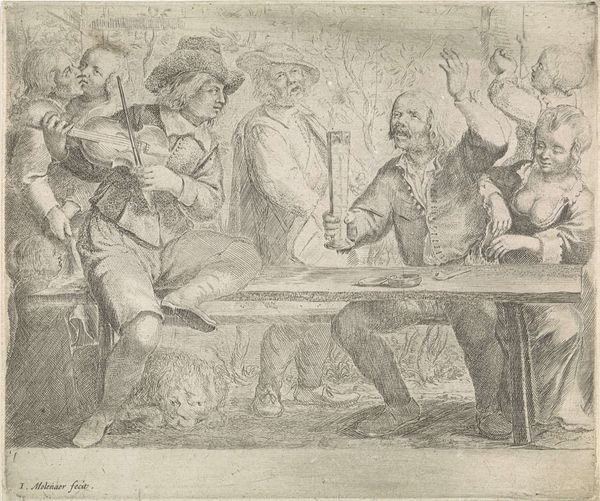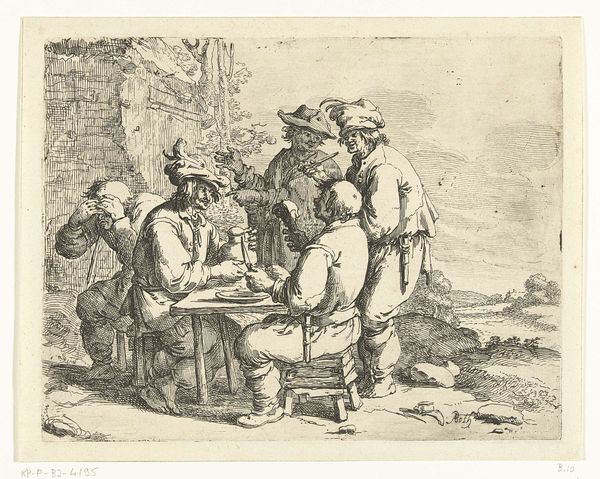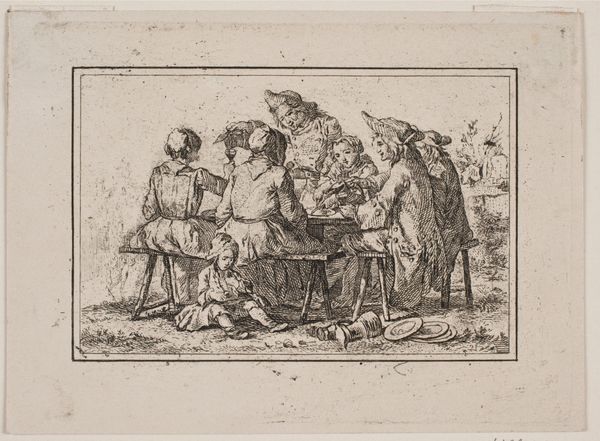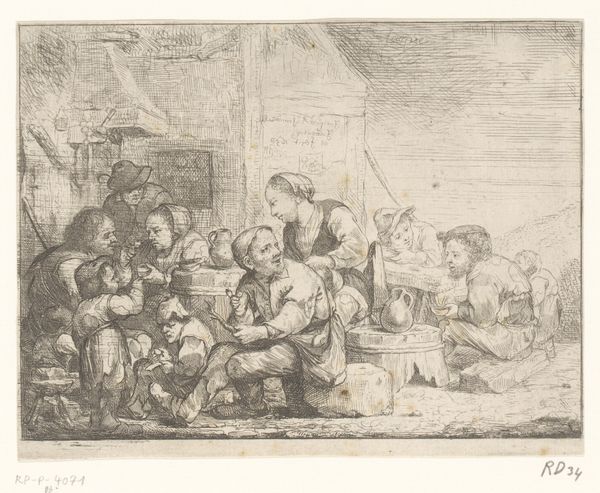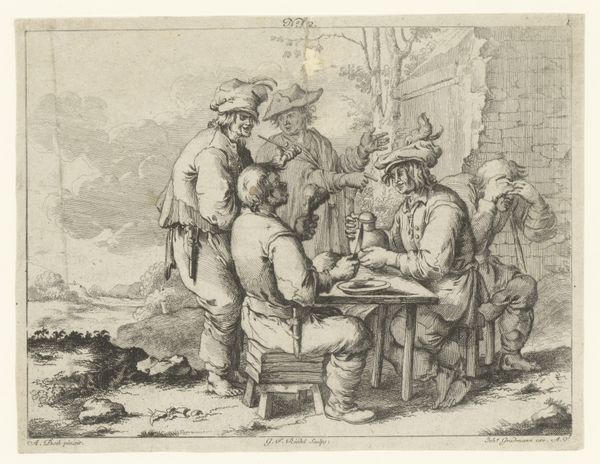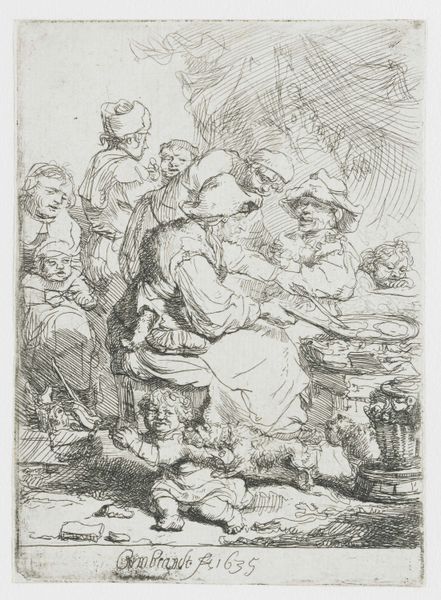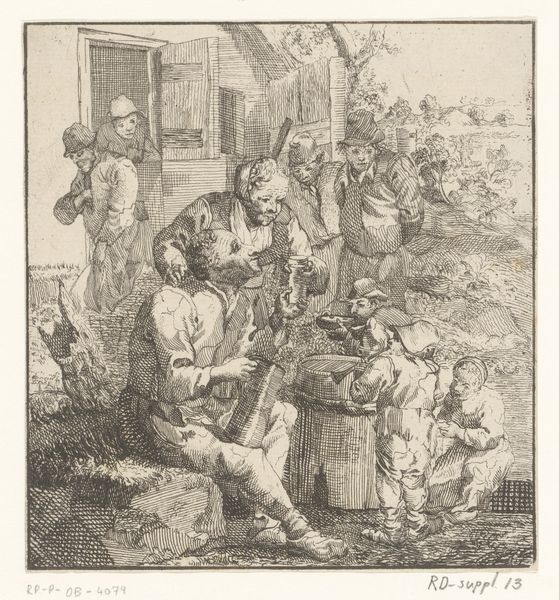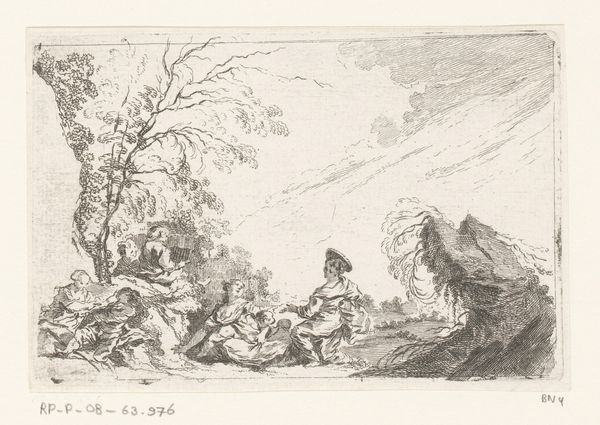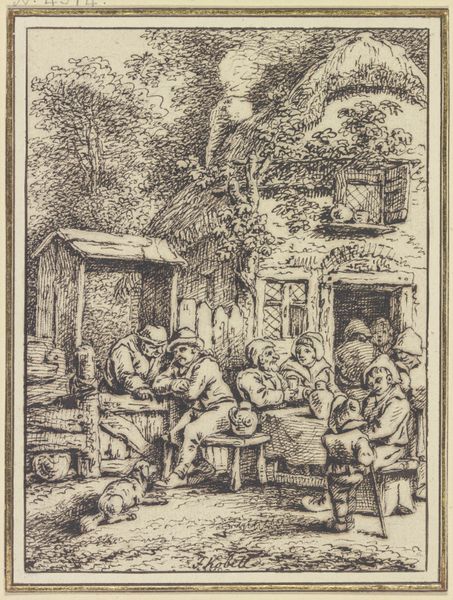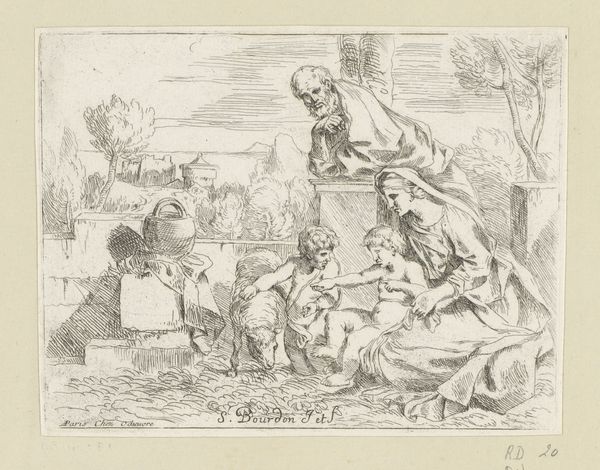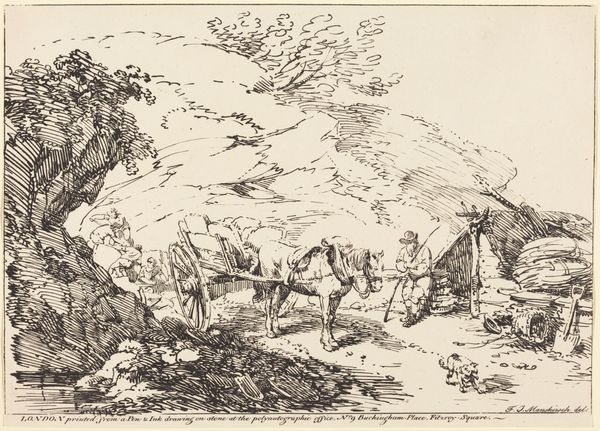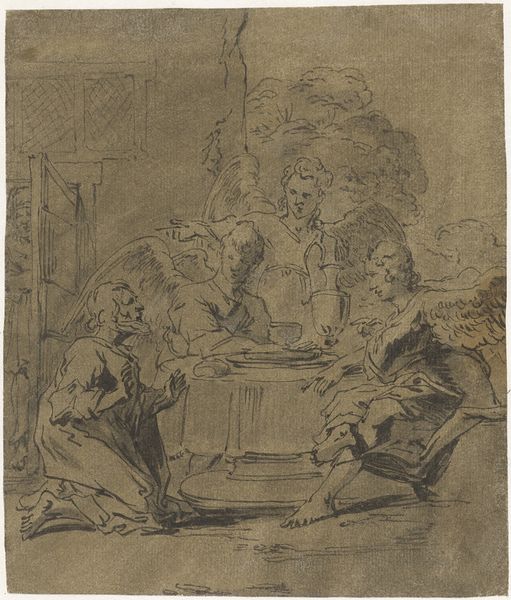
print, etching, ink
#
baroque
#
dutch-golden-age
# print
#
etching
#
landscape
#
figuration
#
ink
#
genre-painting
#
realism
Dimensions: height 68 mm, width 93 mm
Copyright: Rijks Museum: Open Domain
Editor: So, here we have Andries Both's "Drinking Farmers at a Table," an etching from around the 1620s to 1640s, housed right here in the Rijksmuseum. It's… earthy, I guess is the word? All those textures from the etching – it really feels like you can see the grit on their clothes and the roughness of the table. What jumps out at you? Curator: What strikes me is how Both uses the very *process* of etching to depict these figures. Think about it: etching, at its core, is about using acid to bite into metal, a harsh, almost violent process to create an image. Doesn't that mirror the lives of these farmers, their hard labor, and their reliance on basic, almost brutal materials? We see consumption depicted plainly: these men are not delicately sipping wine. It’s about sheer physical need being met. Editor: I hadn't thought about the actual act of *making* the print being connected to what it shows. So you're saying the material and the technique used influences how we should see the subject? Curator: Absolutely! Look closer at the lines. They aren’t elegant, flowing curves like you might find in a portrait of nobility. They are rough, cross-hatched, born of labor, just like the people depicted. Both isn’t just showing us drinking farmers; he's showing us the materiality of their lives, made manifest in the very materiality of the print itself. He's rejecting any notion of refined artistic production, collapsing high art and working-class life into a single process. What do you think about the way that social context comes across through material means? Editor: I suppose it’s about the work put into agriculture, the base material and how labour transforms it? Curator: Precisely! And by choosing etching, a reproducible medium, the artist broadens access. Are these images also for popular consumption and display? Both’s choice democratizes the imagery and experience of these figures drinking? Editor: I never considered that the accessibility of art supplies influences even how accessible the art becomes itself. Interesting how interlinked social context and choices for artistic creation really are. Thanks for pointing that out.
Comments
No comments
Be the first to comment and join the conversation on the ultimate creative platform.
